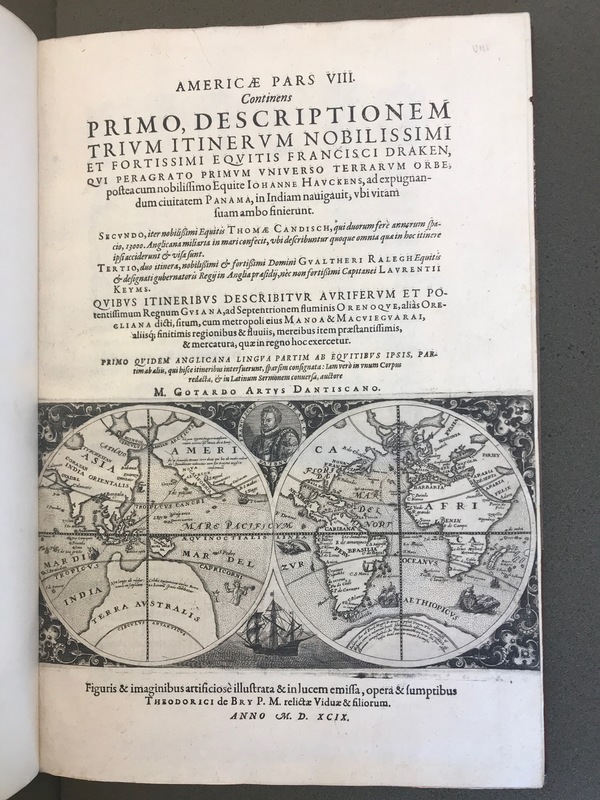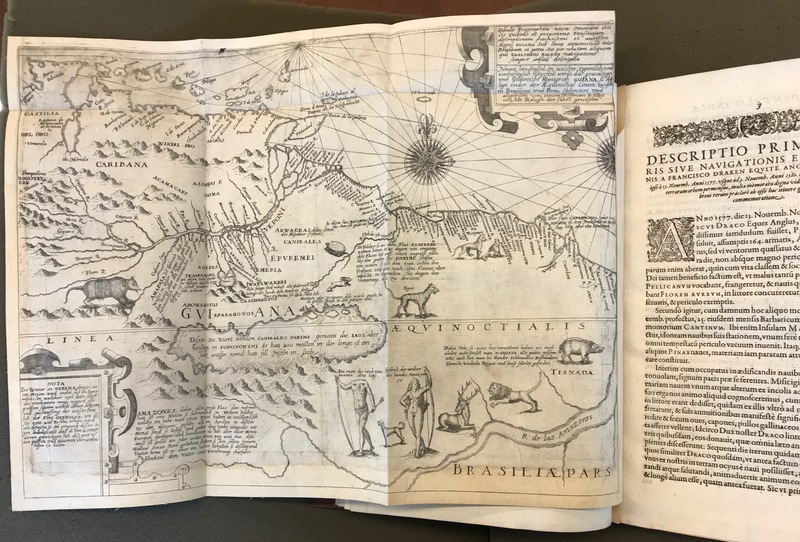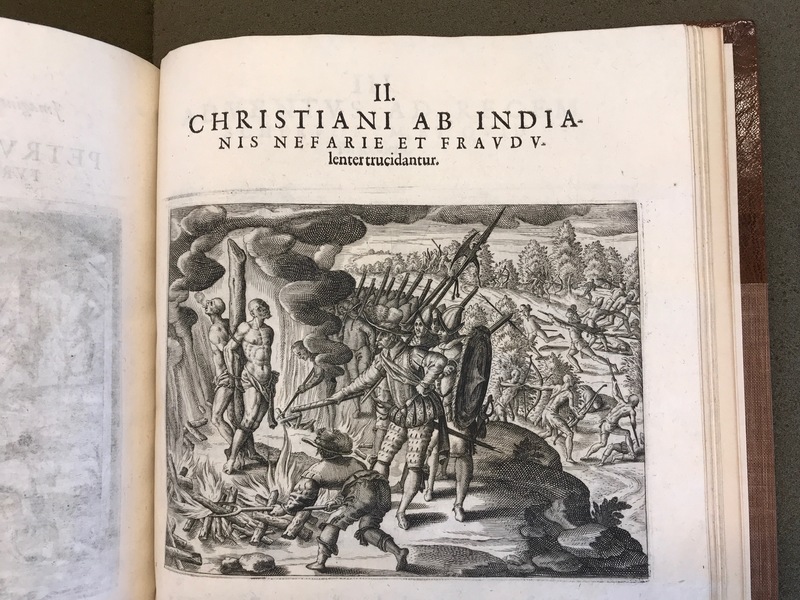A European Americæ
Imagine learning of a place through sketches, letters, and travel narratives, never having seen it yourself. When instructed to create an authoritative depiction of that world, spanning roughly 1,000 pages and 80 illustrations, would you feel comfortable doing so? The engraver of the canonical Americæ volumes, Theodor de Bry, apparently did. Though de Bry is credited with engraving perhaps the best-known early images of New World exploration, the Dutch Protestant never visited the Americas. And yet, his editions of Americæ quickly became authoritative descriptions of those regions. Offering readers a glimpse into the conquest of the Americas, Theodor de Bry’s eighth volume of Americæ depicts images of British takeover to construct a visual argument for European superiority.
Held within the Rose Library, all nine volumes of Americæ are striking for the care put into their production. Rebound on heavy-stock laid paper (vertical chains), and with gilded page edges, this volume was meant to be admired. Volume 8 of Americæ, chosen as a representative sample, is a 99-page book with 18 plates and one map, a folded, linen-backed depiction of the Venezuelan coast and its Native tribes. The title page is striking, no different from the rest of the book. The page contains fantastical monsters, two images of globes, a bust of Francis Drake, five fonts, and a brief description of contents. The book will discuss the voyages of three British explorers: Francis Drake, Thomas Candisch, and Walter Raleigh.
Consider the book’s second illustration, which depicts Sir Walter Raleigh’s expedition engaged in combat with a Native American force. The indigenous warriors in the background are hunched over, cowering, and are not easily distinguished from each other. Their open mouths indicate fear in the face of British weaponry, against which their feathery arrows appear anachronistic, even for the seventeenth century. In the foreground, de Bry imagines the Native Americans as bald, emaciated creatures, here being burned at the stake in a “reification of the ‘primitive’.”[1] Raleigh’s figure, the most heavily armored and distinguished, is immediately recognizable as he sets a pyre alight. Smoke billows around the figures, framing the scene and blending into the overhanging clouds, as if to extend the scene beyond this one image and throughout the lands and peoples touched by British conquest. Serving as ethnography as much as illustration, de Bry’s images advanced a very specific side of the debate around European superiority and Native savagery, which would later justify British ethnocentrism with very concrete political aims.[2]
—Leigh Schlecht


